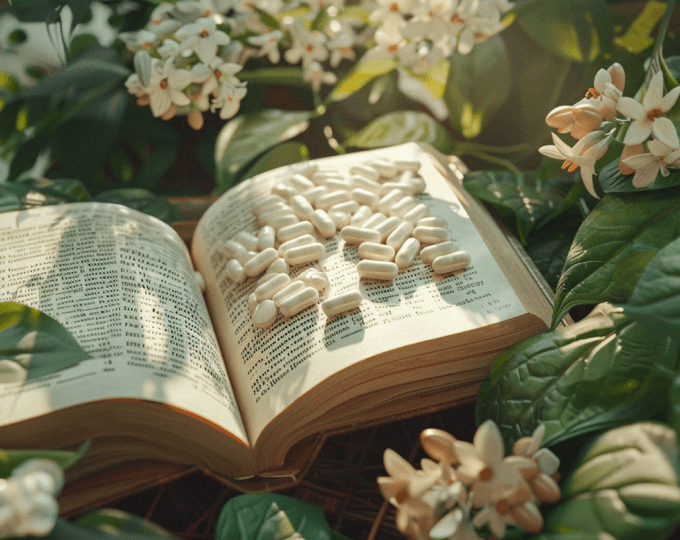Themen dieses Blogartikels:
What is molybdenum?
Molybdenum is an essential trace element. This means that the body cannot produce this nutrient itself, it must be supplied from outside. Did you know? Molybdenum is a chemical element that can be found as a so-called transition metal in the 5th period of the periodic table. It is abbreviated with the element symbol Mo.¹
What are the functions of molybdenum?
Only very small amounts of this metal are found in the human body. The body contains around 8 to 10 mg of molybdenum, most of which is found in the liver and kidneys.² Nevertheless, molybdenum, like many other minerals, is important for the function of some enzymes. Among other things, purine degradation enzymes work with molybdenum. The correct degradation of purines prevents DNA damage. This mineral is also involved in the metabolism of the sulphur-containing amino acids cysteine and methionine.³
What makes molybdenum unique?
Not much is yet known about the medical significance of molybdenum. One thing is certain: although this metal has so far only been described as a cofactor of four human enzymes, it has significant effects on metabolism.⁴ It is involved in important biochemical processes and plays a role in nucleotide synthesis and detoxification, for example.⁵ Molybdenum also appears to be important for dental health, as it inhibits the formation of bacteria and can therefore prevent the development of tooth decay.⁶
How much molybdenum do you need per day?
The body only needs very small amounts of trace elements such as molybdenum. The German Nutrition Society (DGE) gives the following estimates for an adequate intake⁷:
| Age | Molybdenum µg/day |
| Infants | |
| 0 to under 4 months | 7 |
| 4 to under 12 months | 20-40 |
| Children and Teenagers | |
| 1 to under 4 years | 25-50 |
| 4 to under 7 years | 30-75 |
| 7 to under 10 years | 40-80 |
| 10 to under 15 years | 50-100 |
| Adults | 50-100 |
When do you need molybdenum most?
In medicine, molybdenum is used for various therapeutic purposes, such as for diabetes. This trace element has an insulin-like effect, which can help to regulate blood sugar levels.⁸ Molybdenum has also proven to be helpful for intestinal flora disorders, as it can stimulate the body's own intestinal bacteria and reduce intestinal gas. For this reason, the micronutrient can be used to support digestive disorders such as gastrointestinal inflammation and bloating.⁹
How does a molybdenum deficiency develop and how does it manifest itself?
Molybdenum deficiency is extremely rare. In many cases, it is caused by chronic intestinal diseases such as Crohn's disease, which result in the person affected not absorbing enough nutrients from food. However, such a deficiency can also develop as a result of particularly restrictive diets and during a prolonged phase of artificial nutrition. Genetic causes can also be the reason.¹⁰ The symptoms of molybdenum deficiency can be varied. They range from fatigue and hair loss to fertility problems and kidney stones.¹¹
What happens if there is an overdose of molybdenum?
The Federal Institute for Risk Assessment (BfR) recommends taking no more than 80 µg of molybdenum per day in the form of food supplements.¹² Overdosing can lead to gout-like symptoms and diarrhea.¹³
Which foods are particularly high in molybdenum?
Cereals, pulses such as peas, lentils and beans, spinach and some types of cabbage and garlic in particular contain comparatively high levels of molybdenum.
This encyclopedia entry is based on carefully researched sources:
Bibliography & Sources
- chemie.de/lexikon/Molybd%C3%A4n.html
- fet-ev.eu/molybdenum/
- vitalstoff-lexikon.de/Traces/Molybdaen/Functions
- flexikon.doccheck.com/de/Molybd%C3%A4n
- vitalstoff-lexikon.de/Traces/Molybdaen/Functions
- fet-ev.eu/molybdenum/
- dge.de/science/reference values/copper-manganese-chromium-molybdaen/
- infothek-gesundheit.de/molybdaen-molybdaenlack/
- burgerstein-foundation.ch/de-DE/wissen/naehrstofflexikon/molybdaen
- vitalstoff-lexikon.de/Spurenelemente/Molybdaen/Risk groups
- burgerstein-foundation.ch/de-DE/wissen/naehrstofflexikon/molybdaen
- bfr.bund.de/cm/343/hoechstmengevorschlaege-fuer-molybdaen-in-lebensmittel-inklusive-futterrgaenzmittel.pdf
- infothek-gesundheit.de/molybdaen-molybdaenlack/

















